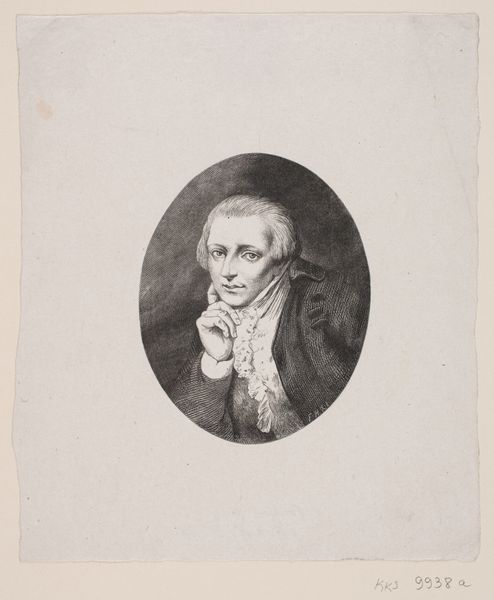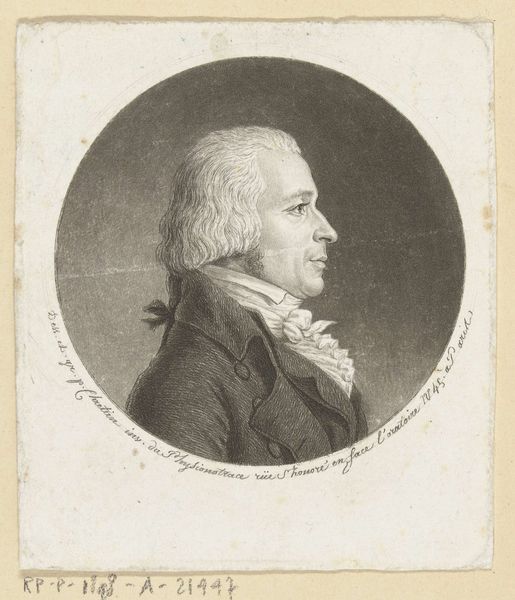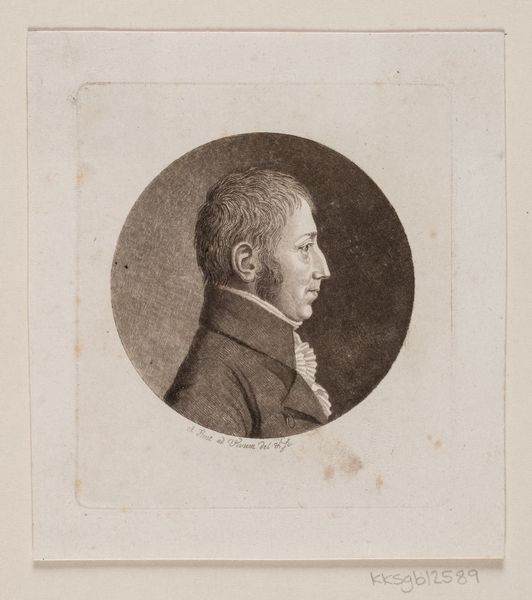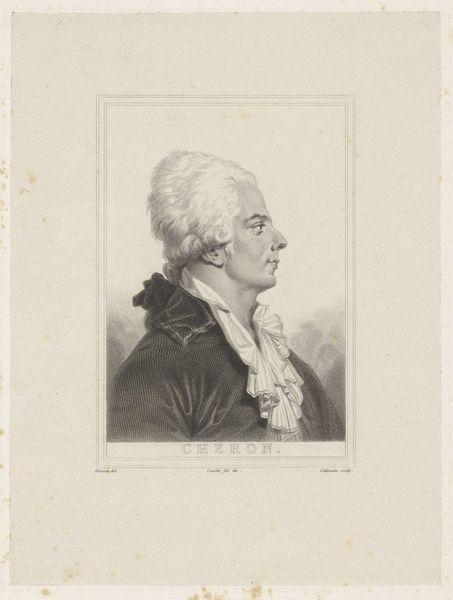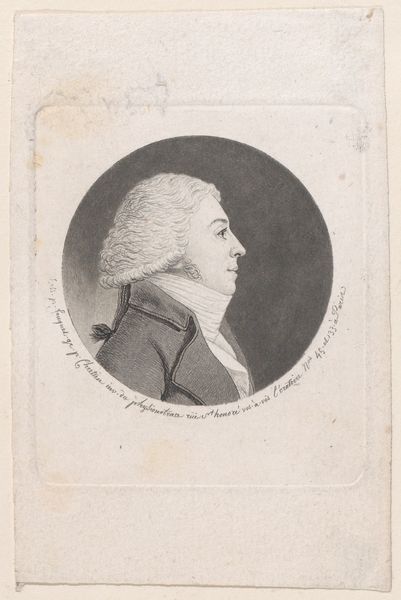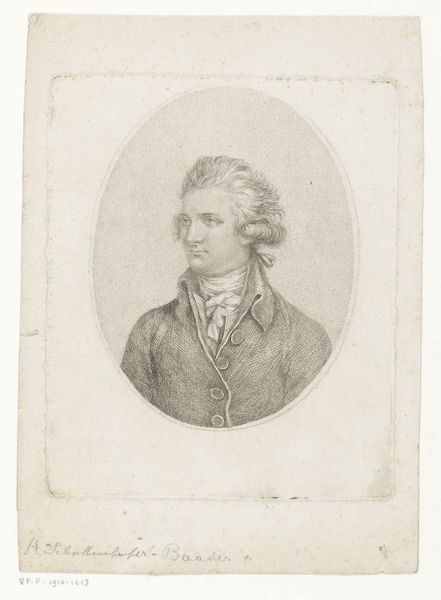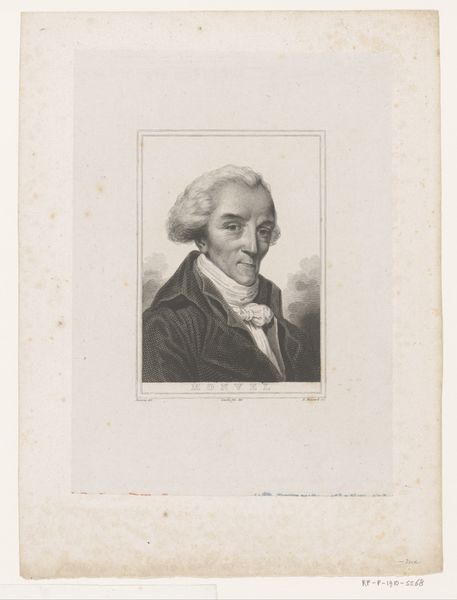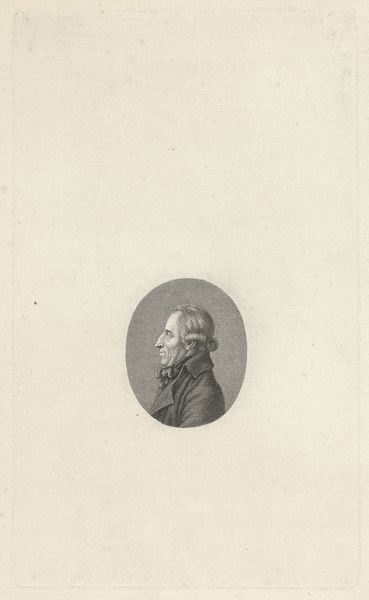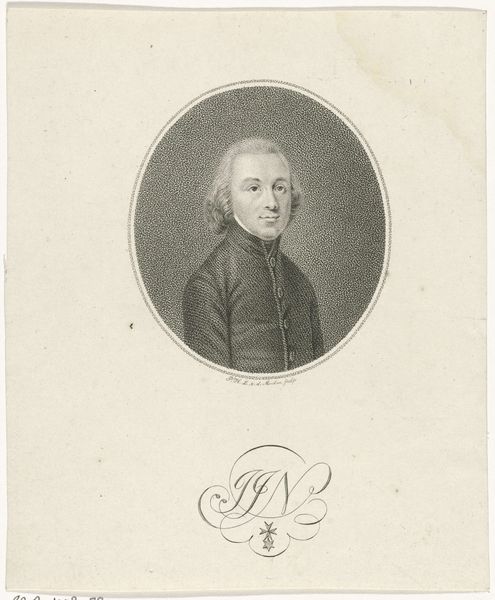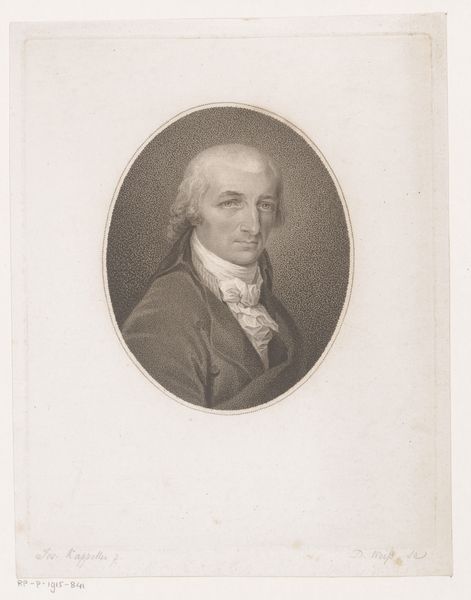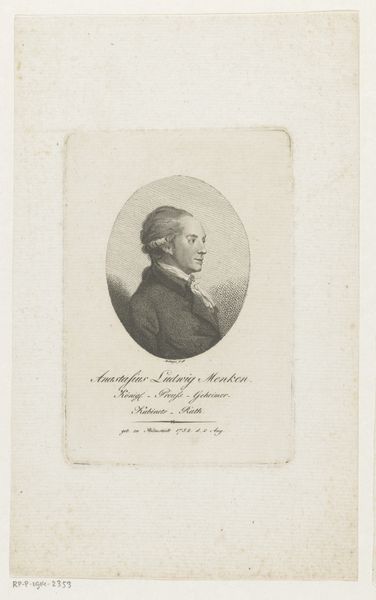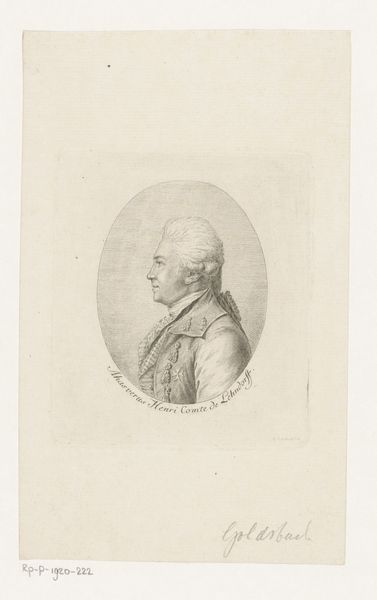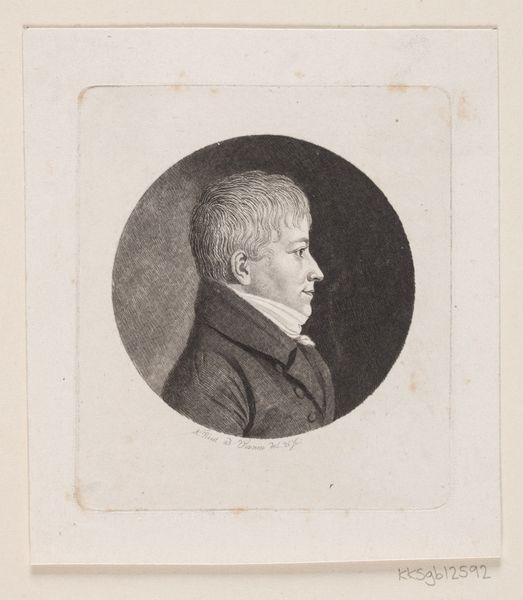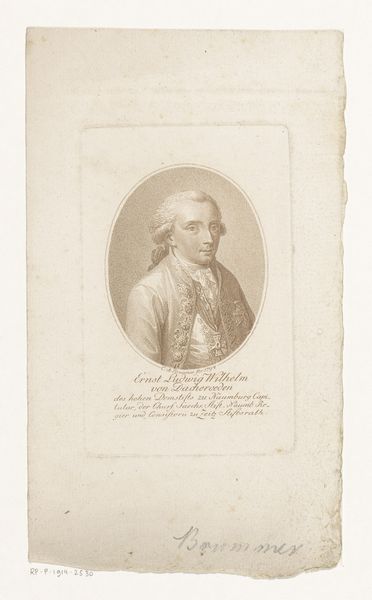
print, engraving
#
portrait
# print
#
classicism
#
line
#
history-painting
#
engraving
#
realism
Dimensions: 73 mm (height) x 60 mm (width) (billedmaal)
Curator: This is an engraving depicting Johann Struensee, created sometime between 1856 and 1935 by Herman Rudolf Müller. It is currently held at the SMK, the Statens Museum for Kunst. Editor: My immediate impression is one of severity, a somewhat stiff formality in this profile view. The detail achieved in the engraving technique gives a palpable sense of the subject's attire and elaborate wig. Curator: Indeed. Struensee was a controversial figure, a physician who rose to immense power as the royal physician and de facto regent of Denmark. Prints like these often served specific political purposes, circulating imagery and shaping public perception of prominent figures. Editor: Precisely! Consider the wig – an explosion of white curls, clearly communicating status and intellectual bearing. The careful rendering of the striped jacket adds to the sense of formality, but even more intriguing to me is the pursed lips and slightly furrowed brow. What do they tell us about his inner state, or, perhaps, the intent of the artist? Curator: It’s possible this stern portrayal reflects Struensee's complicated legacy. While he enacted many progressive reforms, his foreign origins and rapid rise led to resentment and ultimately, his execution. His policies faced a large amount of backlash. Editor: The image carries echoes of both power and vulnerability. We know his fate, and that knowledge casts a shadow on even this seemingly straightforward portrait. There’s a sense of impending doom, or at least of heavy responsibility etched in his features. Curator: Right, and looking at the print itself, we can think about its role in disseminating a particular view of Struensee for later generations, who might have remembered his reformist bent but had been taught about his personal failures and downfall. Prints had the effect of both disseminating imagery, and also standardizing them. Editor: The very act of engraving—the meticulous lines, the considered shading—adds to the weight of the image, doesn't it? This isn’t a fleeting sketch but a carefully constructed statement. Even the oval border, common in portraiture, lends a sense of containment, of a life framed and judged by history. I notice that in comparison to other engravings of similar style, there appears to be more attention focused in his face and gaze. Curator: Thinking about the mechanics and politics behind such an image enriches our perception of the period, reminding us that art—even seemingly simple portraiture—always exists within a complex network of power and meaning. Editor: Agreed. What appeared to be just another stern portrait unveils layers of ambition, ideology, and historical tragedy once we begin to dissect its symbols.
Comments
No comments
Be the first to comment and join the conversation on the ultimate creative platform.
